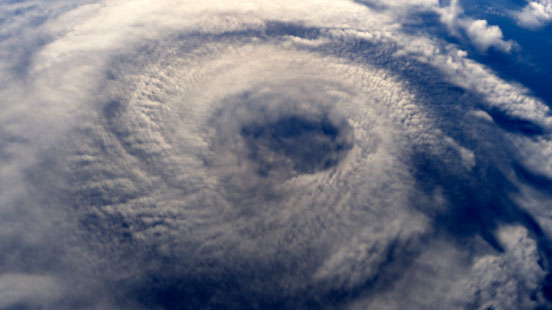 By Andrea Todaro
By Andrea Todaro
The Harvest Moon Regatta® is probably the best known sailboat race on the Texas Gulf Coast, although even many participants do not know its history, or the role that hurricanes have played in its evolution.
The first HMR was the brainchild of three sailors from Lakewood Yacht Club. As John Broderick told the story, one Friday night at Lakewood the bar conversation turned to the need for more opportunities to sail and in particular, opportunities to get offshore. Sail maker John Cameron offered “the best sails I’ve had were late in the fall in the Gulf after the summer doldrums are over and the winter Northers haven’t started.” Competitive racer Ed Bailey agreed, saying he missed the old Texas Offshore Race Circuit (“TORC”) sailing events. Broderick, a dedicated cruiser and, at the time, Lakewood’s commodore, agreed and said, “why don’t we organize something?”
The bar talk led to discussions with members of other area sailing clubs, some of which were held at Frank’s Shrimp Hut, which is now Hooter’s in Seabrook. The first regatta, in 1987, was planned as a four race event beginning with a skippers’ meeting on Friday, Sept. 25, and a kickoff party on Saturday, Sept. 26. Racing started on Thursday, Oct. 1 and ran through the 10th with race segments or “legs” from the Galveston jetties to Port Isabel, back up the coast to Port Aransas, back to the Galveston Jetties, and then up to Marker Two at the Clear Creek channel leading into Lakewood’s homeport, Seabrook.
The full moon closest to the autumnal equinox is known as the “harvest moon” and is characterized by a bright orange color; it is followed by a “hunter’s moon. The “harvest moon” can occur as early as September 8th or as late as Oct. 7 which was the date of the “harvest moon” in 1987. Thus, in October 1987, with the races occurring between October 1st and the 10th, the Harvest Moon Regatta® was born. Seventeen yachts sailed that first year, with several bikini beach parties along the way.
In 1988, the “harvest moon” fell on Sept. 25, so the race start was scheduled for Thursday, Sept.22, but on Sept. 8 Hurricane Gilbert destroyed the Queen’s Point Marina at Port Isabel. The race start was delayed three weeks to Oct. 14 and the destination was changed to Port Aransas. Thus began the tradition of sailing to Port Aransas under a magnificent full moon, sometimes a “harvest moon” if it fell during the first seven days of October, otherwise a “hunter’s moon” if it fell on or after the 8th of October.
Mother Nature and Hurricane Gilbert are credited with the growth of the Harvest Moon Regatta® which grew steadily from the 17 yachts of 1987 to over 260 yachts in later years. The growth was due in large part to the perfect destination, Port Aransas. As John Broderick described it: “This ideal Texas port allows yacht owners and sailors to use minimal days from work to join in on what can be a most memorable overnight sail down the Texas coast during traditionally the best offshore sailing time of the year. And we can all do this in relative safety shared by some 200 other yachts.”
The race, open to sailors with no club affiliation as well as members of other area sailing clubs, became a bucket list item for many Texas sailors, many of whom had little or no offshore experience. The growth of Harvest Moon Regatta® also resulted in the formation of a charitable organization, Bay Access Sailing Foundation. Bay Access now serves as the regatta’s organizing authority, with race management provided by volunteers from Lakewood Yacht Club.
In 2015, Hurricane Patricia was forecast to envelop Port Aransas in a “catastrophic rain event” with the worst conditions forecast for Sunday morning when sailors would be required to leave the relative safety of Port Aransas City Marina for the trip back to Houston and various other home ports. Numerous warnings from weather officials eventually prompted race organizers to cancel the race for the first time in its history. Despite the race cancellation, the party in Port Aransas went on, and some of the more seasoned sailors sailed the course and were able to obtain slips in the City Marina harbor to ride out the gale force winds that arrived as forecast on Sunday morning.
In 2017, when the actual “harvest moon” again fell in October, on the 5th, Hurricane Harvey put a new twist on the story. Hitting the Texas coast near Port Aransas on Aug. 25, the storm devastated “the ideal Texas port” and dumped torrential rain on the entire Houston area. This time, instead of canceling the race or rescheduling it, race organizers decided to reformat the race as a triangle race, similar to Lakewood’s TORC event, the Heald Bank Regatta, which is traditionally held in April. Beginning and ending at the Galveston Jetties, the Regatta was followed by an awards party at Lakewood Yacht Club in Seabrook, where regatta volunteers put a special focus on raising money for the devastated Port Aransas. Port Aransas city officials were surprised to receive a check for about $20,000 from the regatta, and they are looking forward to the return of the regatta this year, although it will be many years before Port Aransas recovers to pre-Harvey prosperity.
 By Bob Mitchell
By Bob Mitchell

